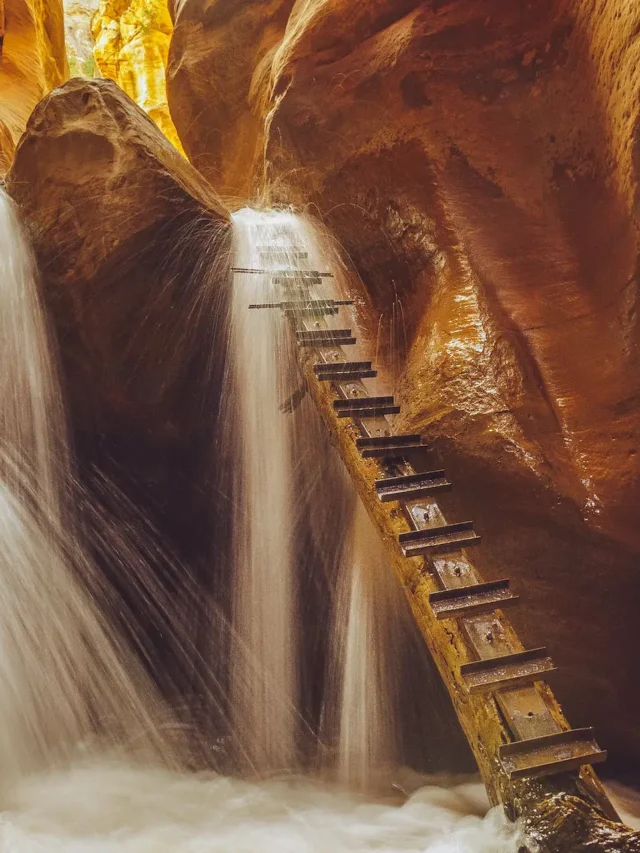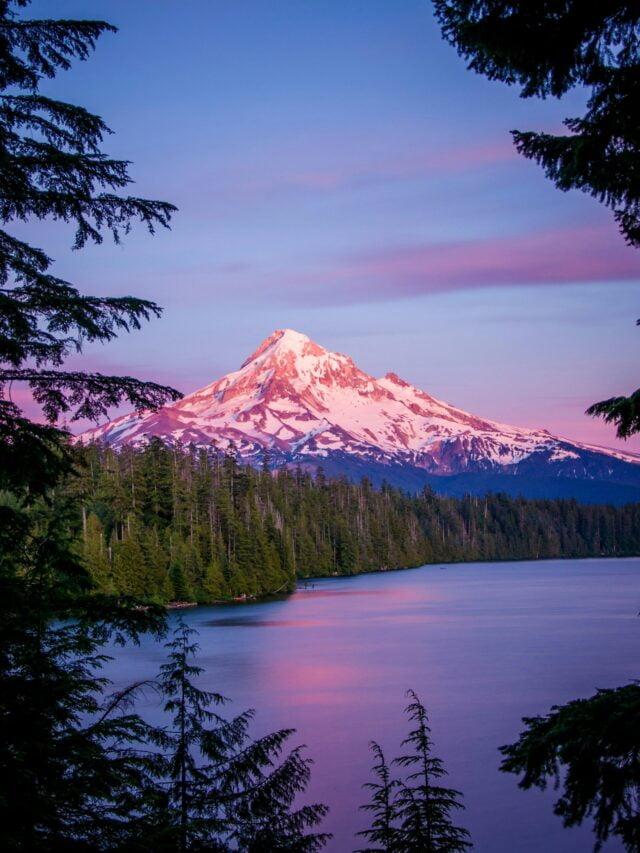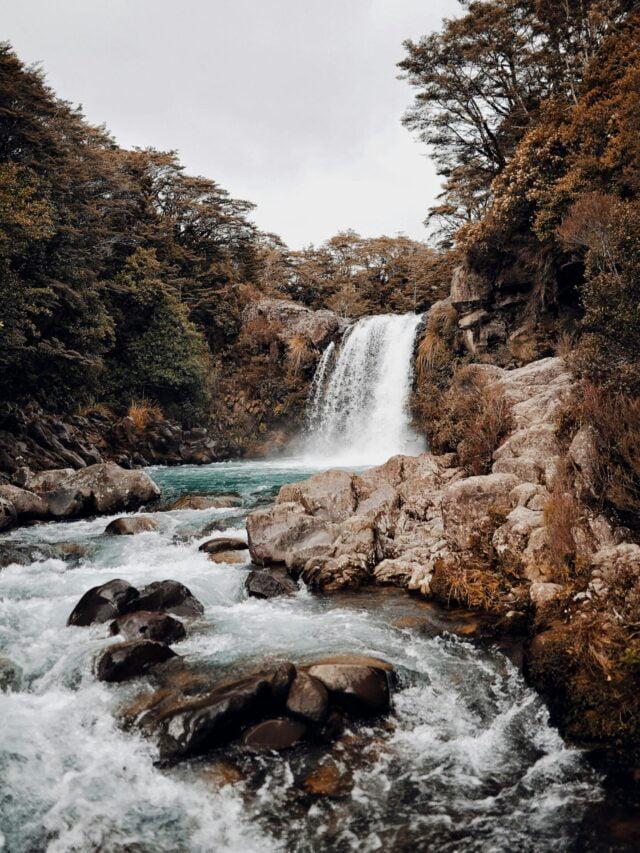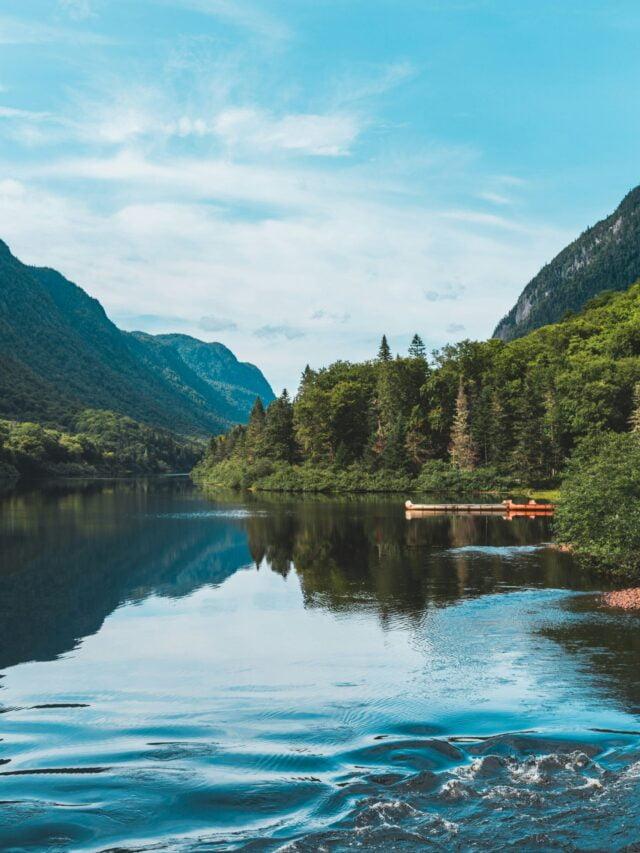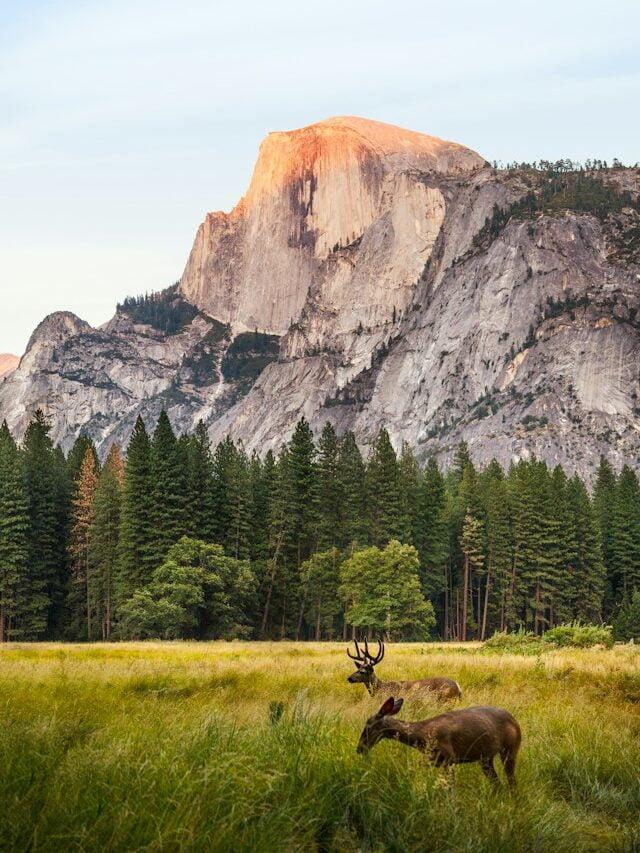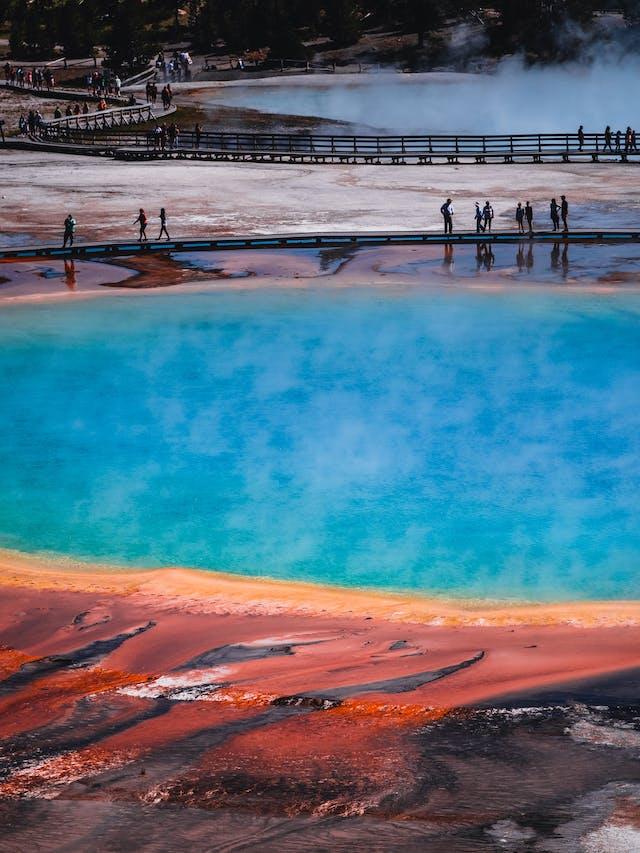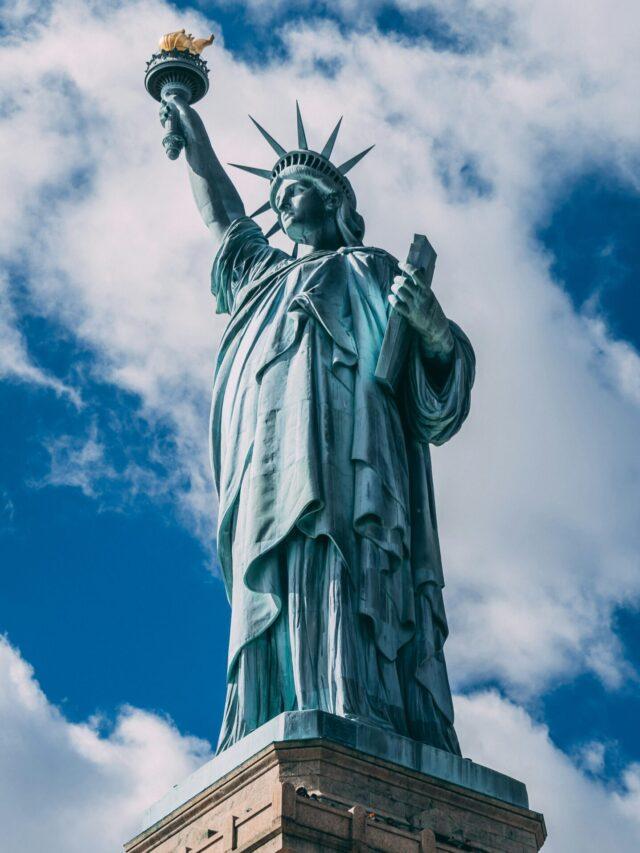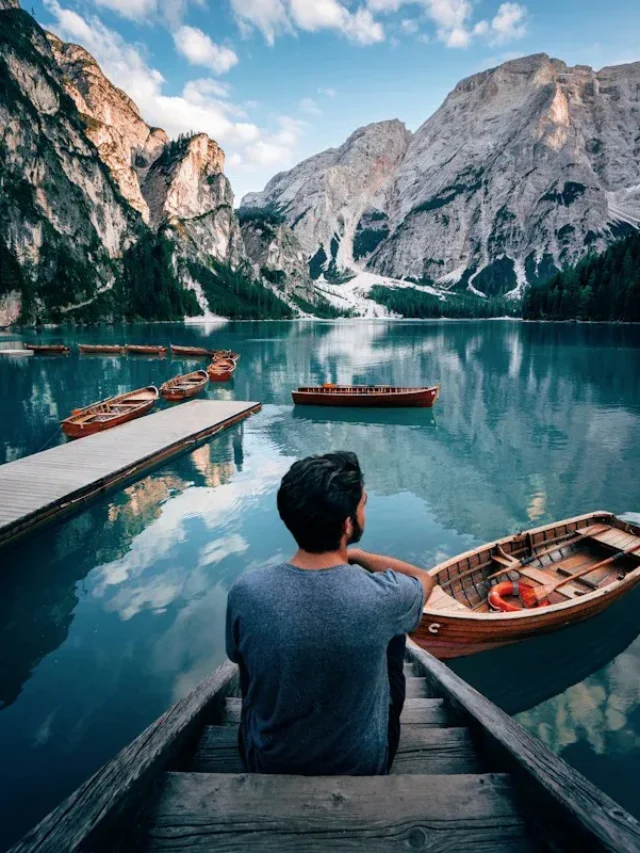Hi there, lovers of the natural world! We’re going to take a trip to explore the marvels of the How Many National Parks Are There in the USA – List of National Parks in United States in this blog post. We’ll explore the beauty that Mother Nature has graciously given to this large and diverse country, from iconic views to hidden gems.
Overview of National Parks
National parks are not just pieces of land; they are treasures preserved for the enjoyment of all. These protected areas play a crucial role in conserving the nation’s natural and cultural heritage. Let’s dive into the significance of these parks and the joy they bring to millions of visitors.
Significance of National parks in the USA
The significance of national parks in the USA extends far beyond their picturesque landscapes. These protected areas play a crucial role in preserving the nation’s natural and cultural heritage. Serving as living classrooms, they offer educational opportunities for visitors to learn about the diverse ecosystems, wildlife, and the historical significance of the land. National parks provide a sanctuary for countless plant and animal species, contributing to biodiversity conservation.
Moreover, these spaces promote outdoor recreation, allowing individuals to connect with nature and engage in activities like hiking, camping, and wildlife watching. As havens for tranquility and reflection, national parks offer a respite from the hustle and bustle of urban life, fostering a deep appreciation for the beauty and fragility of the environment. In essence, these parks serve as a testament to the commitment of preserving the natural wonders that make the USA a land of unparalleled beauty and ecological importance.
Total number of National parks in the USA
Please, raise your hands! The United States is the location of an amazing 63 national parks, according to the most recent record. These protected areas are evidence of the nation’s commitment to maintaining its natural beauty while providing opportunities for people to establish connections with the natural world.
List of all National Parks in United States
| Serial Number | National Park Name | Location |
|---|---|---|
| 1 | Acadia National Park | Maine |
| 2 | Great Smoky Mountains NP | North Carolina & Tennessee |
| 3 | Grand Canyon National Park | Arizona |
| 4 | Yellowstone National Park | Wyoming, Montana, Idaho |
| 5 | Yosemite National Park | California |
| 6 | Zion National Park | Utah |
| 7 | Rocky Mountain National Park | Colorado |
| 8 | Olympic National Park | Washington |
| 9 | Shenandoah National Park | Virginia |
| 10 | Everglades National Park | Florida |
| 11 | Grand Teton National Park | Wyoming |
| 12 | Arches National Park | Utah |
| 13 | Joshua Tree National Park | California |
| 14 | Bryce Canyon National Park | Utah |
| 15 | Death Valley National Park | California & Nevada |
| 16 | Glacier National Park | Montana |
| 17 | Sequoia and Kings Canyon NP | California |
| 18 | Cuyahoga Valley National Park | Ohio |
| 19 | Mount Rainier National Park | Washington |
| 20 | Denali National Park | Alaska |
| 21 | Mammoth Cave National Park | Kentucky |
| 22 | Badlands National Park | South Dakota |
| 23 | Isle Royale National Park | Michigan |
| 24 | Capitol Reef National Park | Utah |
| 25 | Saguaro National Park | Arizona |
| 26 | Petrified Forest National Park | Arizona |
| 27 | Hot Springs National Park | Arkansas |
| 28 | Carlsbad Caverns National Park | New Mexico |
| 29 | Voyageurs National Park | Minnesota |
| 30 | Shenandoah National Park | Virginia |
| 31 | Wind Cave National Park | South Dakota |
| 32 | Great Sand Dunes National Park | Colorado |
| 33 | Black Canyon of the Gunnison NP | Colorado |
| 34 | Big Bend National Park | Texas |
| 35 | Guadalupe Mountains NP | Texas |
| 36 | Mesa Verde National Park | Colorado |
| 37 | Pinnacles National Park | California |
| 38 | Mammoth Cave National Park | Kentucky |
| 39 | Redwood National and State Parks | California & Oregon |
| 40 | North Cascades National Park | Washington |
| 41 | Theodore Roosevelt NP | North Dakota |
| 42 | Hawaii Volcanoes National Park | Hawaii |
| 43 | Congaree National Park | South Carolina |
| 44 | Petrified Forest National Park | Arizona |
| 45 | Great Basin National Park | Nevada |
| 46 | Channel Islands NP | California |
| 47 | Kenai Fjords National Park | Alaska |
| 48 | Haleakalā National Park | Hawaii |
| 49 | Wrangell-St. Elias NP | Alaska |
| 50 | Gates of the Arctic NP | Alaska |
| 51 | Kobuk Valley National Park | Alaska |
| 52 | Lake Clark National Park | Alaska |
| 53 | Glacier Bay National Park | Alaska |
| 54 | Katmai National Park | Alaska |
| 55 | American Samoa NP | American Samoa |
| 56 | Dry Tortugas National Park | Florida |
| 57 | Biscayne National Park | Florida |
| 58 | Virgin Islands NP | Virgin Islands |
| 59 | Isle Royale National Park | Michigan |
| 60 | Indiana Dunes National Park | Indiana |
| 61 | White Sands National Park | New Mexico |
| 62 | New River Gorge NP | West Virginia |
| 63 | Pinnacles National Park | California |
Top 10 National Parks of USA
Explore the amazing beauty of the top national parks in the United States. The United States of America is home to an amazing collection of natural treasures, each with its unique beauty and attraction, from coast to coast. Now let’s discover the top 10 National Parks in United States that best represent the vast biodiversity as well as diverse environments that make America so remarkable.
Yellowstone National Park

Kicking off our list is the world-famous Yellowstone National Park, America’s first national park. Home to the iconic Old Faithful geyser, Yellowstone boasts a mesmerizing landscape filled with geothermal wonders, including vibrant hot springs and bubbling mud pots. Fun fact: It spans across three states – Wyoming, Montana, and Idaho!
Grand Canyon National Park

No list would be complete without the Grand Canyon, a geological masterpiece carved by the Colorado River. Marvel at the canyon’s immense size and vibrant colors while hiking its scenic trails. Did you know that the Grand Canyon is over 6 million years old?
Yosemite National Park

Nestled in the Sierra Nevada Mountains, Yosemite National Park is a haven for outdoor enthusiasts. Discover towering waterfalls, ancient sequoias, and the iconic El Capitan rock formation, a mecca for rock climbers worldwide.
Zion National Park

Utah’s red-rock paradise, Zion National Park, enchants visitors with its towering sandstone cliffs and narrow slot canyons. Immerse yourself in the beauty of the Virgin River and witness the stunning contrast between the towering peaks and lush canyon floor.
Acadia National Park

On the rugged coast of Maine, Acadia National Park offers a blend of rocky shorelines, dense forests, and stunning mountain views. Cadillac Mountain, the highest peak on the East Coast, provides a spectacular sunrise experience.
Rocky Mountain National Park

For those seeking alpine splendor, Rocky Mountain National Park in Colorado is a must-visit. Roam through lush meadows, witness majestic elk, and stand atop the Continental Divide for breathtaking panoramic views
Great Smoky Mountains National Park

Straddling the border between North Carolina and Tennessee, the Great Smoky Mountains National Park is renowned for its mist-covered mountains and diverse plant and animal life. It’s a UNESCO World Heritage Site and an International Biosphere Reserve
Everglades National Park

Venture to Florida to explore the unique ecosystem of the Everglades. Known as the “River of Grass,” this park is a haven for wildlife, including alligators, manatees, and a variety of bird species.
Olympic National Park

Shenandoah National Park

Close to the nation’s capital, Shenandoah National Park in Virginia offers a peaceful escape along the scenic Blue Ridge Mountains. Hike the Appalachian Trail, enjoy stunning views, and experience the park’s rich cultural history
Planning a National Park Visit
Planning a trip to a national park can be an exciting adventure, but it can also feel daunting with so many factors to consider. To help you make the most of your trip, I’ve put together a comprehensive guide that covers everything from choosing the right park to packing your bags and hitting the trail.

1. Choose Your National Park:
The first step is to decide which national park you want to visit. With 63 stunning national parks in the United States, each offering unique landscapes, activities, and experiences, the choice can be overwhelming. Consider your interests, travel style, and the time of year you want to visit.
Here are some factors to help you narrow down your options:
- Interests: Are you looking for hiking, camping, wildlife viewing, photography, or something else?
- Travel style: Do you prefer rustic camping or comfortable lodges? Are you traveling with family, friends, or solo?
- Time of year: Some parks have distinct seasons that offer different experiences. For example, Yellowstone is best in summer, while Denali is best for winter sports.
2. Research the National Park:
Once you’ve chosen a park, it’s important to do some research to familiarize yourself with the park’s regulations, facilities, and must-see attractions. Here are some resources to get you started:
- The National Park Service website: https://www.nps.gov/
- The park’s official website
- Travel blogs and articles
- Guidebooks
3. Plan Your Activities:
With so much to see and do in most national parks, it’s helpful to plan your activities in advance. Consider the following:
- Hiking: Choose trails that match your fitness level and interests. Obtain a park map and study the trails before you go.
- Camping: Decide whether you want to camp in a campground, backcountry camping, or stay in a lodge. Make reservations in advance, especially during peak season.
- Wildlife viewing: Research the best times and places to see wildlife in the park.
- Ranger programs: Many parks offer ranger-led programs on a variety of topics, such as history, geology, and wildlife.
4. Pack Your Bags:
Once you have your itinerary in place, it’s time to start packing. Here are some essential items to bring:
- Clothing and footwear appropriate for the weather and activities you’ll be doing
- Sunscreen, insect repellent, and a hat
- Plenty of water and snacks
- A map and compass
- First-aid kit
- Emergency shelter
- Camera
- Binoculars
5. Hit the Trail!
With your plans made and your bags packed, it’s time to hit the trail and enjoy your national park adventure! Remember to leave no trace, be respectful of wildlife, and have fun!
Planning a National Park Visit
- Match Your Park to Your Pace: Don’t just pick the most popular park. Consider your interests and abilities. Are you a seasoned hiker craving adventure, or a family seeking leisurely strolls and scenic views? Pick a park that caters to your desired pace and activities.
- Embrace the Shoulder Seasons: Peak season means crowds and limited availability. Consider visiting during shoulder seasons (spring and fall) for pleasant weather, smaller crowds, and better deals on lodging and campsites.
- Think Beyond the Popular Spots: While iconic landmarks are tempting, don’t neglect hidden gems. Research lesser-known trails, viewpoints, or historical sites for a unique and less crowded experience. Ranger programs can offer insider tips on these hidden treasures.
- Pack Smart, Not Heavy: Research the park’s specific needs and pack accordingly. Layering clothes is key for unpredictable weather. Avoid single-use items and opt for reusable water bottles and food containers to minimize waste.
- Become a Park Steward: Remember, you’re a guest in these natural wonders. Practice Leave No Trace principles: pack out all trash, stay on designated trails, respect wildlife, and minimize your impact on the environment.
Bonus Tip: Download the National Park Service app for maps, park information, and even ranger-led audio tours for a truly immersive experience!
10 Things to consider before visiting a national park
- Interests & Abilities: Choose a park that aligns with your desired activities (hiking, camping, wildlife viewing, etc.) and consider your physical limitations when choosing trails and experiences.
- Time of Year & Weather: Research the park’s seasons and typical weather patterns. Pack accordingly, remembering that mountain weather can change rapidly.
- Reservations & Permits: Some parks require reservations for campsites, backcountry permits for specific areas, and even permits for certain activities. Book well in advance, especially during peak season.
- Accessibility: Not all parks are equally accessible. Check for mobility-friendly trails, visitor centers, and facilities if needed.
- Wildlife Safety: Learn about the park’s wildlife, including potential dangers and proper behavior around animals. Respect their space and never feed them.
- Leave No Trace: Pack out all your trash, stay on designated trails, and avoid disturbing plants and animals. Minimize your impact on the park’s ecosystem.
- Respectful Interactions: Be mindful of other visitors and park staff. Follow park regulations, maintain noise levels, and avoid disrupting the natural peace.
- Cell Service & Connectivity: Cell service can be unreliable in many parks. Download offline maps and ranger apps beforehand, and inform others of your itinerary.
- Essential Gear: Pack appropriate clothing and footwear for the terrain and weather. Bring essentials like sunscreen, insect repellent, water, snacks, first-aid kit, and navigation tools.
- Contingency Plans: Be prepared for unexpected situations like weather changes, trail closures, or injuries. Have backup plans and emergency contact information readily available.
Remember, national parks are precious resources. By planning thoughtfully, respecting the environment, and following regulations, you can contribute to their preservation while enjoying a memorable and safe adventure.
Conclusion
Hope you like this blog post on How Many National Parks Are There in the USA – List of National Parks in United States.
Remember, these national Parks are treasures to be cherished. By following these blog post, you can ensure your visit is not only unforgettable but also respectful and sustainable. So, get out there, explore, and create memories that will last a lifetime!





